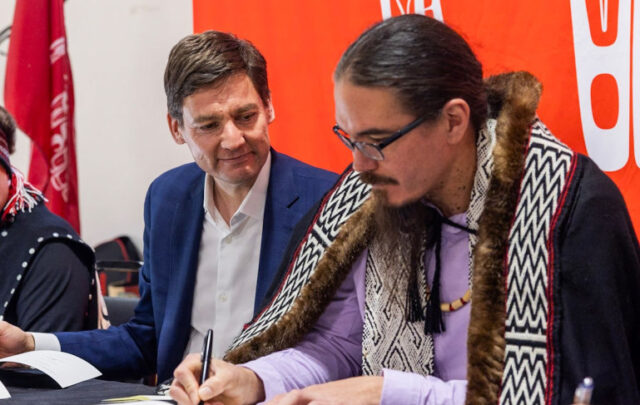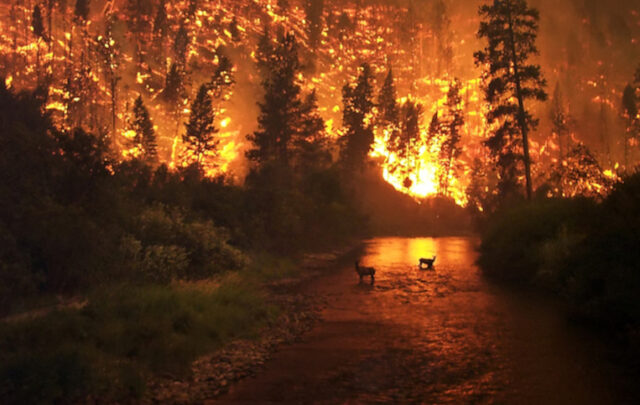Click on the headline (link) for the full text.
Many more articles are available through the Energy Bulletin homepage
News from sustainable Willits
Claudia Reed and David Courtland, Willits News
Sun-powered city: Solar plan on tonights council agenda
A plan that could power city operations with up to 700 KW of home-grown energy and cover nearly all energy costs – is up for possible action at tonights city council meeting.
UPDATE: Solar city on the way; Council prepares for installation of panel
A grassroots approach to building local economies
Willits Chamber of Commerce members heard two Bay Area consultants outline a grass roots approach to building local economies at their Wednesday lunch in Willits City Hall. Don Shaffer and Merrian Fuller explained principles behind the Local First concept of creating local support for local businesses to the chamber. Marketing campaigns emphasizing use of locally owned businesses not just by shoppers, but business owners and suppliers are a key part of the strategy, said Fuller.
Recipes for ancient tradition, sustainable future
What does a professional chef have to do with planning sustainable communities?…Prentice, according to the website www.wisefoodways.com, seeks to provide a model for how communities can feed themselves in a way that is satisfying and health-supportive on all levels: delicious, environmentally responsible, and grounded in the wise nourishing traditions of our forebears.
(20-25 January 2006)
Germany agonises over 30% childless women
Luke Harding, The Guardian
· Highest number in world choose not to have family
· Minister highlights the threat of low birthrate
————
Germany was plunged into an anguished debate yesterday about how to encourage reluctant couples to breed after new figures showed Germany with the world’s highest proportion of childless women.
Thirty per cent of German women have not had children, according to European Union statistics from 2005, with the figure rising among female graduates to 40%. Germany’s new family minister, Ursula von der Leyen, said that unless the birth rate picked up the country would have to “turn the light out”.
(27 January 2006)
A solution masquerading as a problem. Italy, Spain and Greece are listed as having even lower birthrates than Germany. -BA
It’s better to green your diet than your car
New Scientist
THINKING of helping the planet by buying an eco-friendly car? You could do more by going vegan, say Gidon Eshel and Pamela Martin of the University of Chicago.
They compared the amount of fossil fuel needed to cultivate and process various foods, including running agricultural machinery, providing food for livestock and irrigating crops. They also factored in emissions of methane and nitrous oxide produced by cows, sheep and manure treatment.
The typical US diet, about 28 per cent of which comes from animal sources, generates the equivalent of nearly 1.5 tonnes more carbon dioxide per person per year than a vegan diet with the same number of calories, say the researchers, who presented their results at a meeting of the American Geophysical Union in San Francisco last week.
By comparison, the difference in annual emissions between driving a typical saloon car and a hybrid car, which runs off a rechargeable battery and gasoline, is just over 1 tonne. If you don’t want to go vegan, choosing less-processed animal products and poultry instead of red meat can help reduce the greenhouse load.
(From issue 2530 of New Scientist magazine, 17 December 2005, page 19)
Bringing global warming home
Paul Rogers, San Jose Mercury News
People can’t take steps to reduce global warming unless they know how much they are contributing to it.
Using that belief as a starting point, environmentalists and Silicon Valley companies rolled out a new plan Thursday to help South Bay businesses and the public compute how many pounds of “greenhouse gases” they are generating, and then voluntarily offset that pollution with donations to companies that produce wind power and other renewable energy.
Under the scheme, the Sierra Club and Acterra, a Palo Alto environmental group, unveiled a new Web site, www.cool-it.us, where individuals can type in the number of miles they drive, their car’s gas mileage, the amount of electricity and natural gas on their power bills and how many airline miles they fly.
The site then computes how many pounds of carbon dioxide those practices generate. And it provides a way for people to voluntarily buy renewable power credits through 3 Phases Energy Services, a San Francisco-based renewable energy broker.
(27 January 2006)
Paved paradise in Berkeley
Turk Kauffman and Lauri Puchall, line magazine
Berkeley’s antiwar protests of the 1960s and its leadership in the free speech movement have earned it the reputation of home base for liberal politics. With tie-dyed and other colorful social agendas capturing the public eye, green concerns have tended to fade into the background. Now, in an era when the global consequences of petroleum dependency are becoming more apparent, ecology and transportation are returning to the forefront. How citizens get from here to there, and how, what, and where they park is already changing in Berkeley.
…There is a strong support among diverse groups for making Berkeley more livable by encouraging vibrant mixed-use districts designed around people, not cars. SaraHope Smith insists that we don’t have to renounce comfort and ease to have a sustainable city. She encourages “supporting the human side” of technology by “using technology with wisdom and greater simplification.”
One of the most inventive suggestions commensurate with a sustainable vision for the city comes from EcoCity Builders. In following ecological planning principles to their logical conclusions, they offer transfer of development rights as a strategy for defining clear-cut boundaries between developed and open space. Those boundaries would apply to the automobile as well. If a project such as the Heart of the City is successful, it may help (de)pave the way for more flexible zoning and sustainable development.
(January 2006? – no date)
“line” magazine is a publication of the American Institute of Architects, San Francisco.
If the text doesn’t display at this URL, go to linemag.org/_line/ and search for “Berkeley.”
EU legislators approve tough mining waste laws
Xinhuanet via chinaview
BRUSSELS — The European Union (EU)’s lawmakers approved new environmental rules on Wednesday which impose higher standards on the licensing, operation and after-care of mining waste.
Under the new rules, mining companies will have to provide economic guarantees that they can restore sites after their mining activities have ended, the European Parliament said in a press release.
National governments of the EU will be obliged to identify all their closed and abandoned mining sites and to quantify any health or environmental dangers they may pose.
“This new legislation will reduce the risk of leaks from mines, both from those in use today and from old closed-down sites,” said the parliament’s rapporteur Jonas Sjostedt from Sweden.
“Dangerous tailings dams with high concentrations of cyanide, such as in the accident in Baia Mare in Romania, will no longer be allowed,” he said.
Wednesday’s rules are an amended compromise reached between the parliament and EU ministers in December.
Around 400 million tons of mining waste are produced each year, accounting for 30 percent of the EU’s total waste.
The new rules were drafted in the wake of the accident in 2000 at Baia Mare in Romania, where quantities of waste water spilled into a river, taking with them 120 tons of cyanide. The pollution spread as far as Hungary and into the Danube river.
(18 January 2006)





